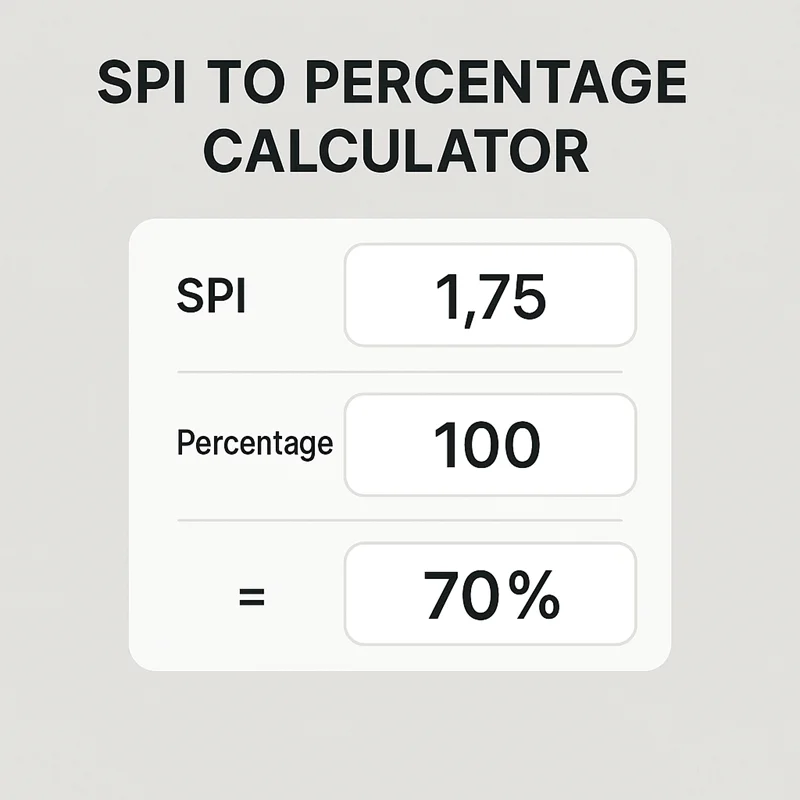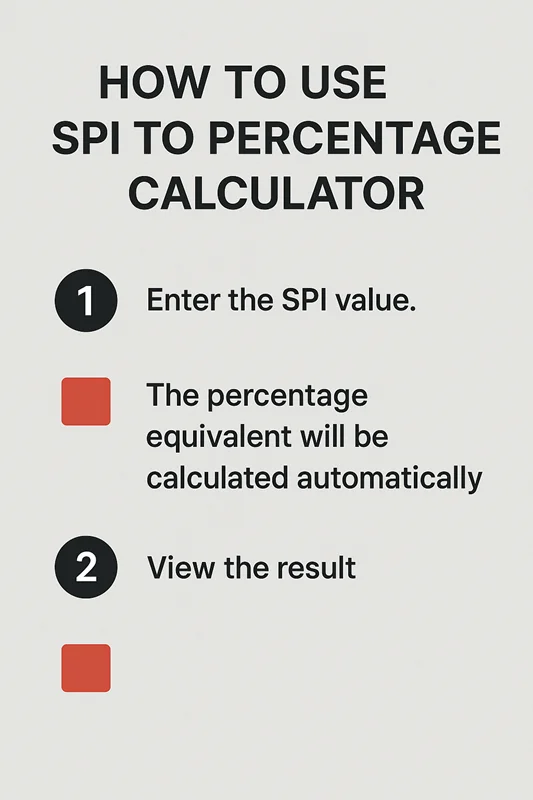Convert your Semester Performance Index to Percentage
💡 Tip: You can also press Enter after typing your SPI
Works offline • No data stored • Instant results
Are you struggling to convert your SPI (Semester Performance Index) to percentage? Whether you’re applying for jobs, higher studies, or simply want to understand your academic performance better, converting SPI to percentage is essential. This comprehensive guide will help you use an SPI to percentage calculator and understand the conversion process step by step.
SPI (Semester Performance Index) is a grading system used by many Indian universities, particularly GTU (Gujarat Technological University), to evaluate student performance in a specific semester. It’s calculated based on your grades and credit hours for each subject.
The SPI system typically ranges from 0 to 10, where:
Unlike traditional percentage systems, SPI considers both your grades and the weightage (credit hours) of each subject, making it a more balanced evaluation method.
Converting SPI to percentage becomes necessary in several situations:
For Job Applications: Most companies and HR departments understand percentage better than SPI. Converting helps you present your academic performance in a familiar format.
Higher Education: When applying to universities abroad or for competitive exams, percentage conversion is often required for eligibility criteria.
Scholarship Applications: Many scholarship programs require percentage-based academic records for evaluation.
Personal Understanding: Converting SPI to percentage helps you better understand your academic standing compared to traditional grading systems.
GTU (Gujarat Technological University) provides an official formula for converting SPI to percentage. Here’s the standard conversion method:
Primary GTU Formula:
Percentage = (SPI – 0.75) × 10
Alternative GTU Formula:
Percentage = SPI × 10 – 7.5
Both formulas yield the same result and are officially recognized by GTU.
Example Calculation:
If your SPI is 8.5:
Using Formula 2: 8.5 × 10 – 7.5 = 85 – 7.5 = 77.5%

| SPI | Percentage | Grade Classification |
|---|---|---|
| 10.0 | 92.5% | Outstanding |
| 9.5 | 87.5% | Excellent |
| 9.0 | 82.5% | Excellent |
| 8.5 | 77.5% | Very Good |
| 8.0 | 72.5% | Very Good |
| 7.5 | 67.5% | Good |
| 7.0 | 62.5% | Good |
| 6.5 | 57.5% | Satisfactory |
| 6.0 | 52.5% | Satisfactory |
| 5.5 | 47.5% | Average |
| 5.0 | 42.5% | Average |
| 4.5 | 37.5% | Below Average |
| 4.0 | 32.5% | Poor |

SPI (Semester Performance Index) measures performance for a single semester, while CPI (Cumulative Performance Index) represents your overall performance across all semesters.
Yes, SPI and CGPA follow similar scales (0-10). Your CGPA is essentially the average of all your semester SPIs, weighted by credit hours.
Yes, the formula (SPI - 0.75) × 10 is the official GTU conversion method and is widely accepted by employers and educational institutions.
Generally, 60% and above (SPI 6.75+) is considered good, while 75% and above (SPI 8.25+) is considered excellent.
While many universities use similar formulas, it's best to confirm with your specific institution as conversion methods can vary.
Calculate the CPI (average of all SPIs) first, then apply the conversion formula. For weighted average, consider credit hours of each semester.
Converting your SPI to percentage doesn’t have to be complicated. Whether you use an SPI to percentage calculator or manual calculation, understanding this conversion helps you better present your academic achievements. Remember to use the correct formula for your university and double-check your calculations for accuracy.
The SPI conversion formula is a valuable tool for students, and with the examples and charts provided in this guide, you should be able to convert any SPI value to percentage confidently.


Quickly convert your CGPA to accurate percentage.